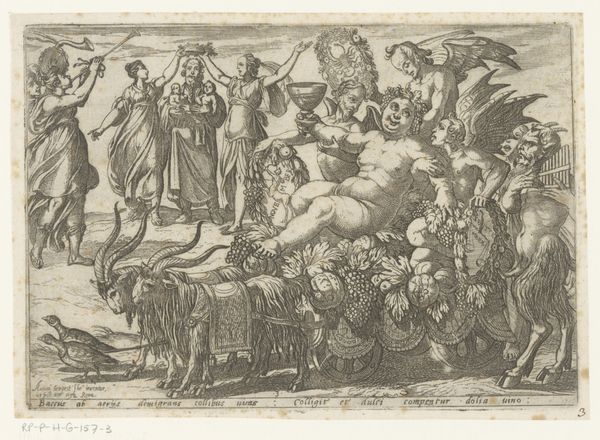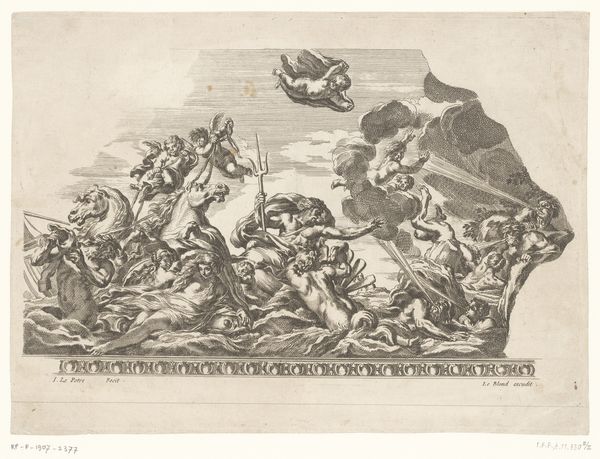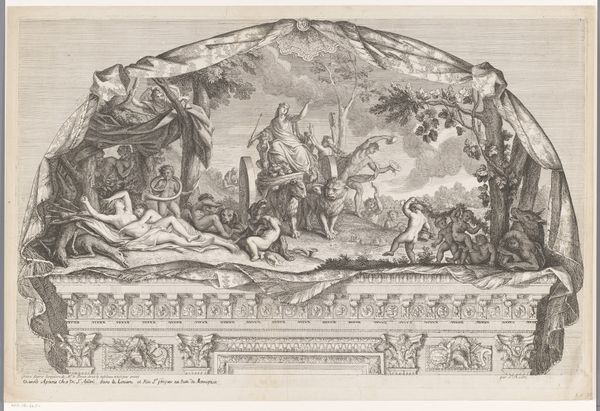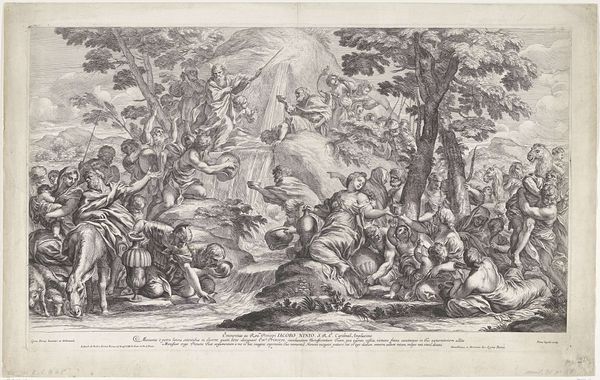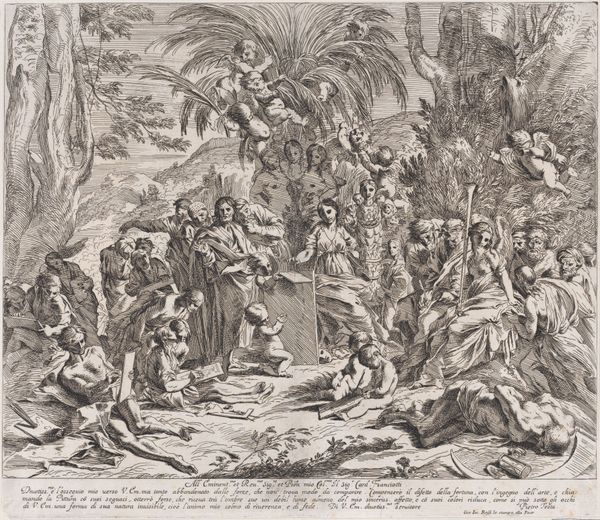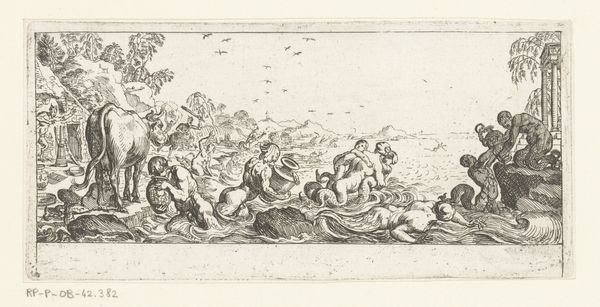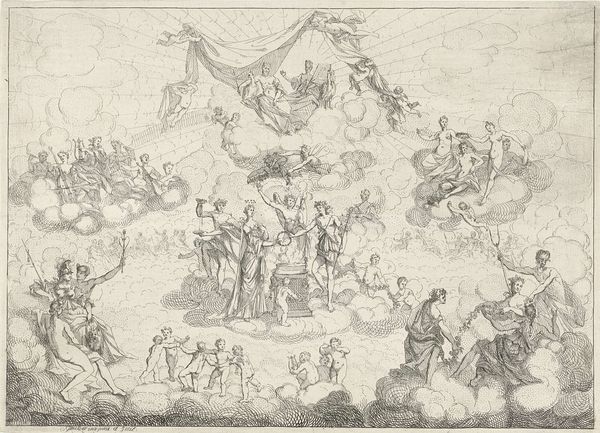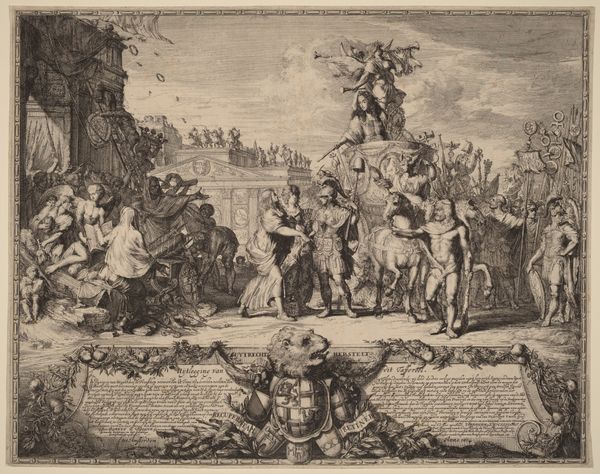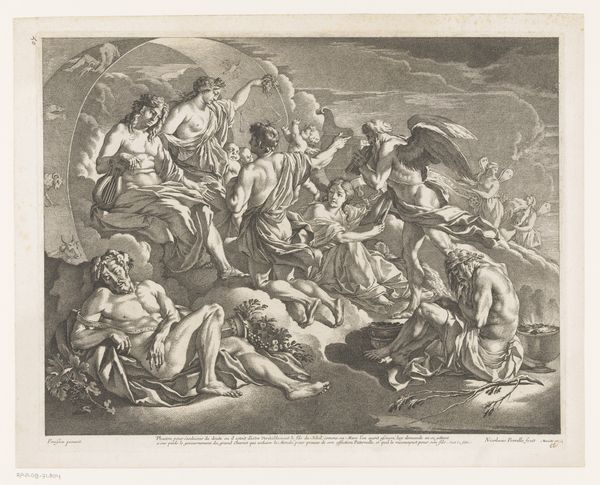
print, etching
#
allegory
#
baroque
# print
#
etching
#
landscape
#
figuration
#
history-painting
Dimensions: height 219 mm, width 302 mm
Copyright: Rijks Museum: Open Domain
Editor: This is Jean Le Pautre’s etching, "Arrival of Aeneas in Italy," created sometime between 1628 and 1682. The Baroque style and landscape setting feel grandiose, yet there's an incompleteness to the scene, with this asymmetrical top edge that’s hard to ignore. What stands out to you most in this piece? Curator: I see a fascinating intersection of power, myth, and artistic license. Le Pautre, working within the Baroque period, wasn’t just depicting Aeneas’s arrival; he was contributing to the visual construction of dynastic legitimacy. This print underscores how foundational myths like Aeneas landing in Italy were instrumentalized by European elites. Consider the composition – who gets to be at the forefront? And how are those bodies racialized and gendered in relation to each other? Editor: So, beyond just telling a story from Virgil, it's making a statement about power dynamics? Curator: Absolutely. It invites us to critically examine how history, or rather, the *representation* of history, serves specific ideological purposes. Aeneas isn't just a refugee; he’s a founder, a patriarchal figure, and, in this rendering, embodies a certain type of European masculine authority. Who gets to claim that lineage, and at whose expense? These are questions we need to ask. Also, what does it mean for this very formal scene to have been reproduced in a *print*? Who had access to it, and what power does this scene suggest for those who saw it? Editor: I see. I hadn’t considered the role of prints in circulating these ideas more widely. Curator: Precisely. Think about it: how does the medium itself contribute to the message? The etching, with its lines and shading, creates a hierarchy of visibility, highlighting certain figures and narratives while obscuring others. Editor: It’s like the very act of creation reinforces existing power structures, even as it depicts them. Curator: Exactly! Art isn’t just a reflection of society; it’s an active participant in shaping it. It’s through questioning these historical images, like Le Pautre’s, that we can begin to unpack their lingering effects on contemporary understandings of identity and belonging. Editor: That’s a powerful takeaway. It makes me want to re-evaluate so many other historical artworks. Curator: That’s the first step to creating real, tangible change.
Comments
No comments
Be the first to comment and join the conversation on the ultimate creative platform.
